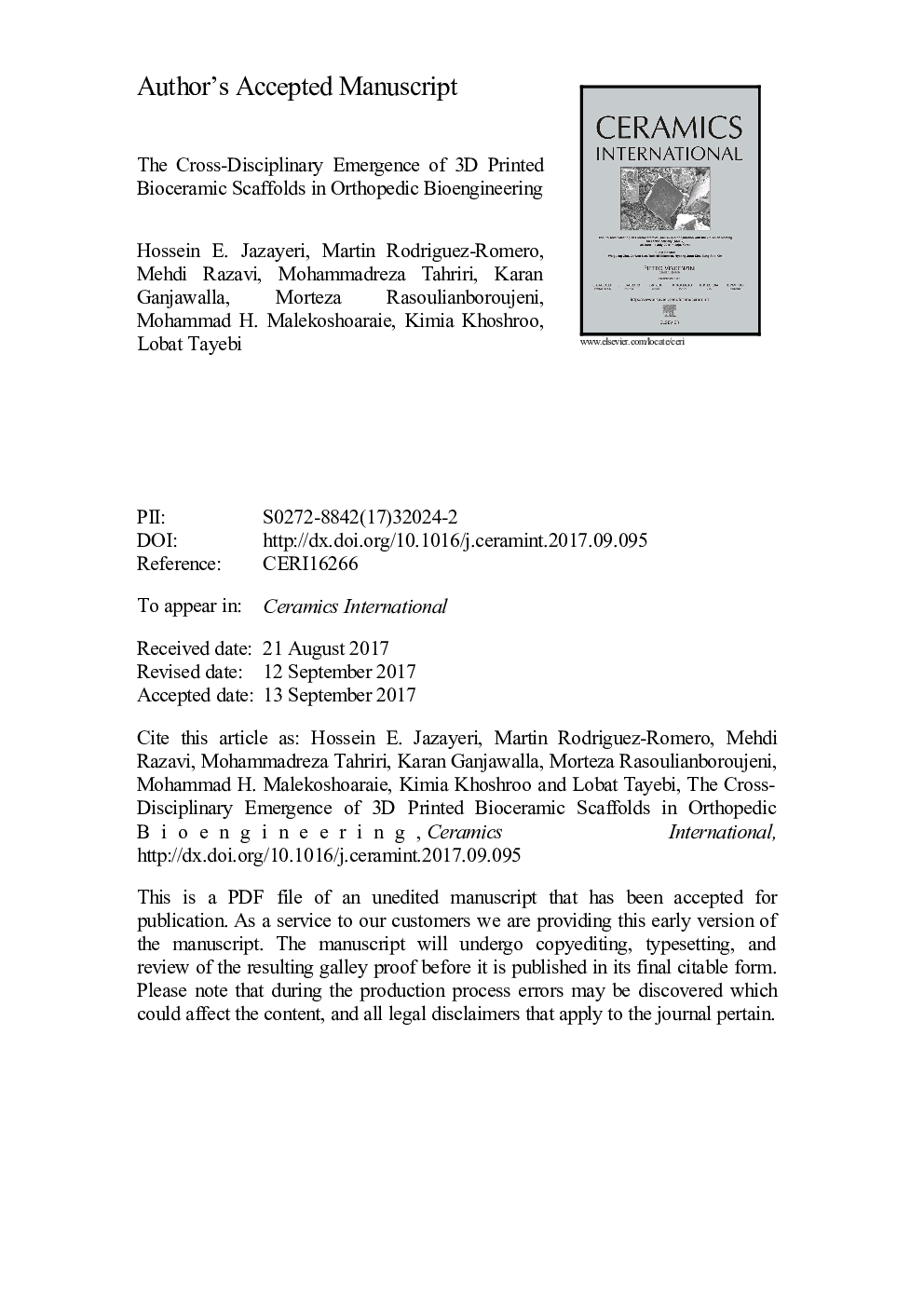| Article ID | Journal | Published Year | Pages | File Type |
|---|---|---|---|---|
| 7888646 | Ceramics International | 2018 | 32 Pages |
Abstract
Over the past several decades, the implementation of bioceramics in orthopedic bioengineering has become increasingly profound. The resemblance of the material to bone histomorphology makes them favorable to use in tissue engineering schemes, in addition to the evidence that they exhibit osteoconductivity and that many manifest the appropriate mechanical strength. Moreover, the strategy to use the 3D bioprinting technique holds the potential to consistently manufacture commercializable scaffolds, tailored for diverse clinical applications with physicochemical property-dependent biodegradation rates, and usher in a new era of effective hard tissue fabrication. This review is the first of its kind in that it has thoroughly compiled the most recent studies on 3D printing of bioceramic scaffolds to treat bone defects and anomalies. Manuscripts were mostly chosen from the last decade, highlighting the novelty of the approach to regenerative orthopedic bioengineering via ceramic-based 3DP technologies. Likewise, in addition to the materials perspective present in the body of this work, tissue engineering scaffold requirements were explained as well as the incorporation of drug delivery schemes for localized drug administration and cargo release rates in pre-clinical studies.
Related Topics
Physical Sciences and Engineering
Materials Science
Ceramics and Composites
Authors
Hossein E. Jazayeri, Martin Rodriguez-Romero, Mehdi Razavi, Mohammadreza Tahriri, Karan Ganjawalla, Morteza Rasoulianboroujeni, Mohammad H. Malekoshoaraie, Kimia Khoshroo, Lobat Tayebi,
